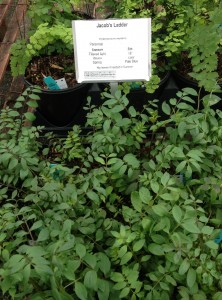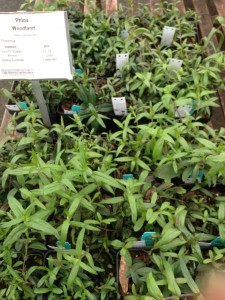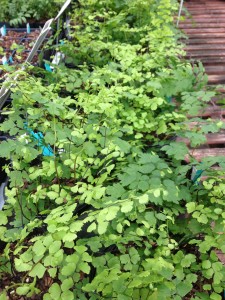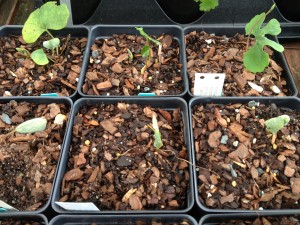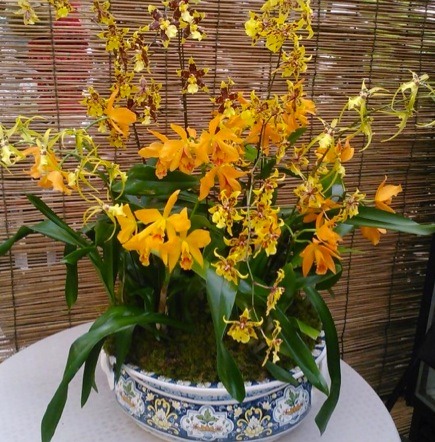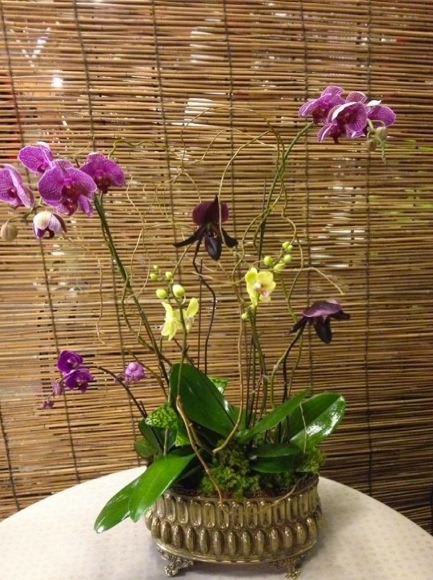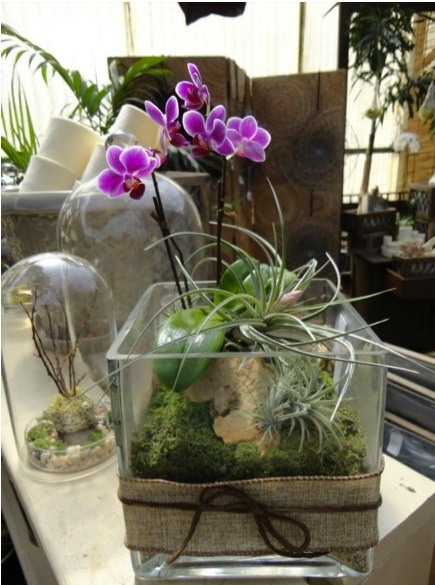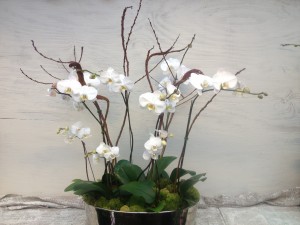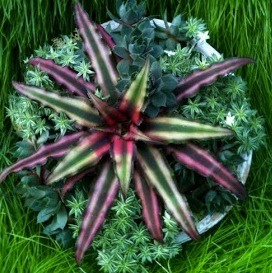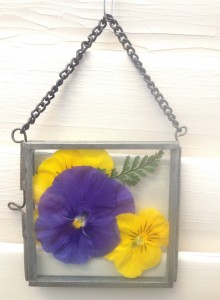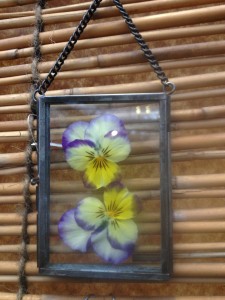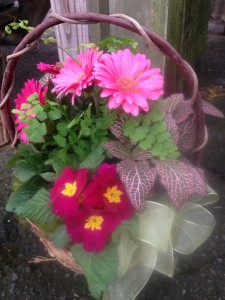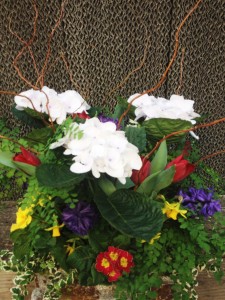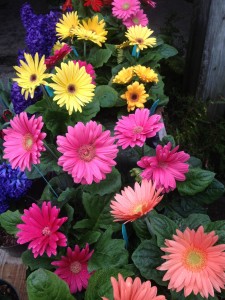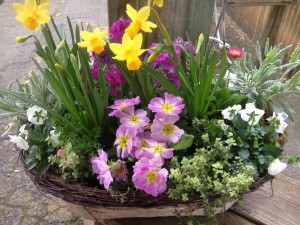A mainstay of perennial gardens, many of us have a love/hate relationship with coreopsis. Other than the native species, many seem to be difficult for folks here. The taller, earlier ones need constant deadheading to look their best, and the smaller flowered, wispy foliaged (verticillatas) need cutting back as soon as their initial bloom is done to keep them looking neat.

Coreopsis ‘Full Moon’
A couple of years ago I bought this coreopsis for the shop, hoping the flower color and the plant would work well here. I’m happy to say it has been an absolutely wonderful addition to my hot, sunny front bed, consorting quite happily with roses, daylilies, Mexican sage, rosemary, yucca (Yes, it’s very hot!), gaura, green santolina, mecardonia, Mexican heather, and various other heat loving plants.

With annual red gomphrena, ornamental blueberry,
yucca, and hypericum shrubs – Kris’ front bed
In fact, I sent pictures of it in various stages through the summer to one of my local growers, and, with each picture, a note saying, “Please grow this so I can pass it along to other Birmingham gardeners!” Well, I’m very happy to say she did, and we have Coreopsis ‘Full Moon’ available from our local wholesaler right down the road in Alabaster!

Coreopsis ‘Full Moon’ in Kris’ front bed with annual purple angelonia
I honestly can say this Coreopsis ‘Full Moon’ bloomed in my garden from June through the hottest part of summer and only started to wane in August – an unbelievable bloom time for a perennial. The color is a soft, buttery yellow like ‘Moonbeam’ coreopsis, but the foliage is more substantial and the flowers themselves are much larger.These are available now if you’d like to try one or more!
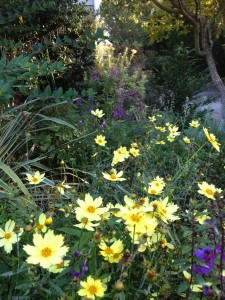
Coreopsis ‘Full Moon’ is a winner!
Tip: A great way to get even longer bloom from a perennial like this is to cut it back by half early in the season, and even better is to cut half of your plants back by half. That way the stems that haven’t been cut back bloom first. Those you cut back will bloom a bit later, thus extending your bloom period. Look at this post for more information on this technique – happy gardening!

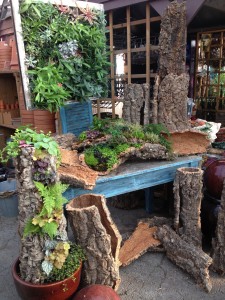
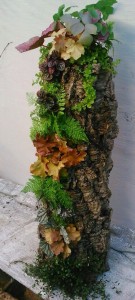
 The tall one that Jamie planted utilizes houseplants which work very well in shaded areas through the summer, and some perennials. This piece will take filtered sun and clipping of the houseplants to maintain the balance of the planting. A pot was inserted in the bottom, planted, and then soil filled to the top, filling the opening all the way up to create a cool vertical piece.
The tall one that Jamie planted utilizes houseplants which work very well in shaded areas through the summer, and some perennials. This piece will take filtered sun and clipping of the houseplants to maintain the balance of the planting. A pot was inserted in the bottom, planted, and then soil filled to the top, filling the opening all the way up to create a cool vertical piece.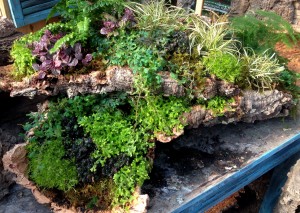 In the next planting, I took 3 of the flatter, rounded pieces and actually “stacked” them at angles, creating planting pockets and different levels and an overall shape I was pleased with. Next, perennials, including tassel ferns, ‘Metallica’ and ‘Burgundy Glow’ ajuga, golden and peacock selaginellas, Scotch moss and Carex ‘Evergold’, were added, creating sweeps of color and wispy trailers over the edges. An added bonus is that all of these plants are perennial and can be used in your landscape as they outgrow the container.
In the next planting, I took 3 of the flatter, rounded pieces and actually “stacked” them at angles, creating planting pockets and different levels and an overall shape I was pleased with. Next, perennials, including tassel ferns, ‘Metallica’ and ‘Burgundy Glow’ ajuga, golden and peacock selaginellas, Scotch moss and Carex ‘Evergold’, were added, creating sweeps of color and wispy trailers over the edges. An added bonus is that all of these plants are perennial and can be used in your landscape as they outgrow the container.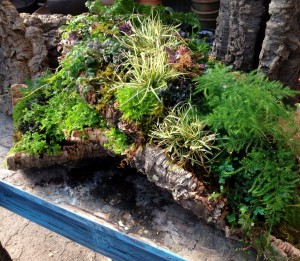 Both of these have been lined before planting but will drain over the edges in the case of the stacked pieces and down through the bottom of the planting in the tall piece. We picture them in areas of restful shade, adding their green presence to woodland surroundings…We hope you enjoy our creations as much as we enjoyed making them!
Both of these have been lined before planting but will drain over the edges in the case of the stacked pieces and down through the bottom of the planting in the tall piece. We picture them in areas of restful shade, adding their green presence to woodland surroundings…We hope you enjoy our creations as much as we enjoyed making them!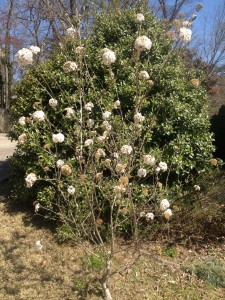


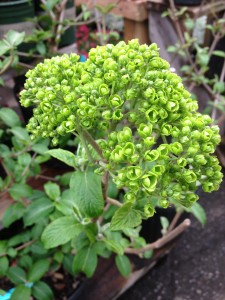
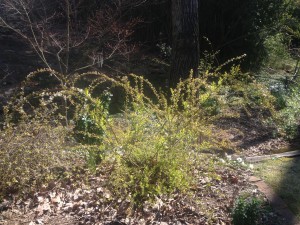
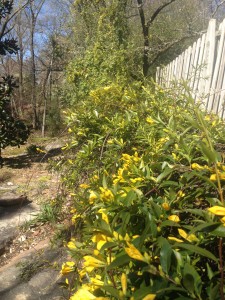

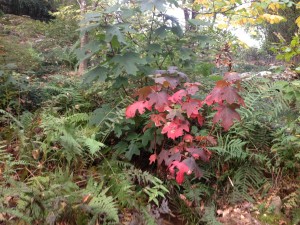

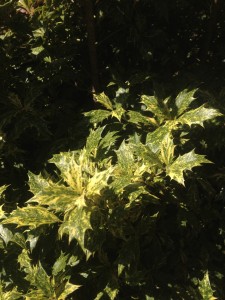

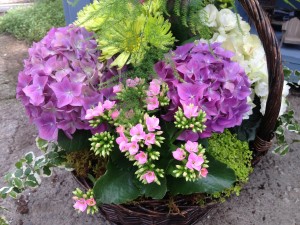
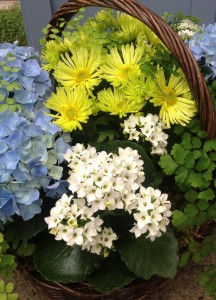

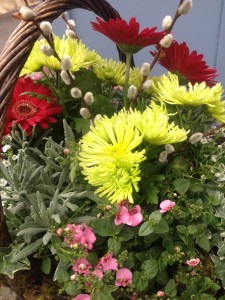
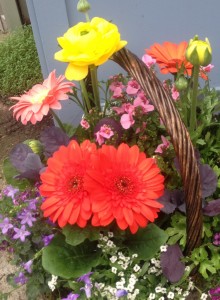 And there are such pretty things to play with! This time of year, with spring in the air but not quite yet here – this is the time of hydrangeas, calla lilies and sweet alyssum – the soft colors of Easter mingling and overlapping with the brightness of other, more exuberant blooms of gerbera daisies, ranunculus and the first of the geraniums. So much to work with! So we begin to gather flowers and foliage and perhaps a few herbs to add their scent, color and texture to the mix.
And there are such pretty things to play with! This time of year, with spring in the air but not quite yet here – this is the time of hydrangeas, calla lilies and sweet alyssum – the soft colors of Easter mingling and overlapping with the brightness of other, more exuberant blooms of gerbera daisies, ranunculus and the first of the geraniums. So much to work with! So we begin to gather flowers and foliage and perhaps a few herbs to add their scent, color and texture to the mix.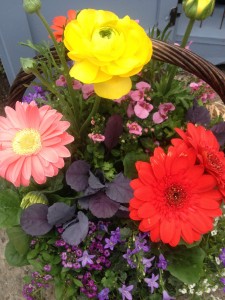 This post isn’t going to be about design rules, because quite frankly, we sometimes break them. (Maybe we’re just rebels at heart!) No, this is about what feels and looks right to you. And, perhaps it’s more about not being afraid of making a “mistake” – with arrangements, container plantings or your own garden.
This post isn’t going to be about design rules, because quite frankly, we sometimes break them. (Maybe we’re just rebels at heart!) No, this is about what feels and looks right to you. And, perhaps it’s more about not being afraid of making a “mistake” – with arrangements, container plantings or your own garden.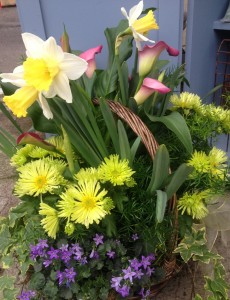
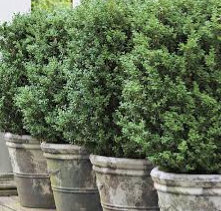 This is a portion of Bradford Horticulture’s newsletter. Dave Bradford is a former Birmingham area extension agent. His newsletter would be a good one to sign up for if you’d like timely information for our area! (Now between Oak Street Garden Shop and the Boxwood Doctor, you should be covered!)
This is a portion of Bradford Horticulture’s newsletter. Dave Bradford is a former Birmingham area extension agent. His newsletter would be a good one to sign up for if you’d like timely information for our area! (Now between Oak Street Garden Shop and the Boxwood Doctor, you should be covered!) 